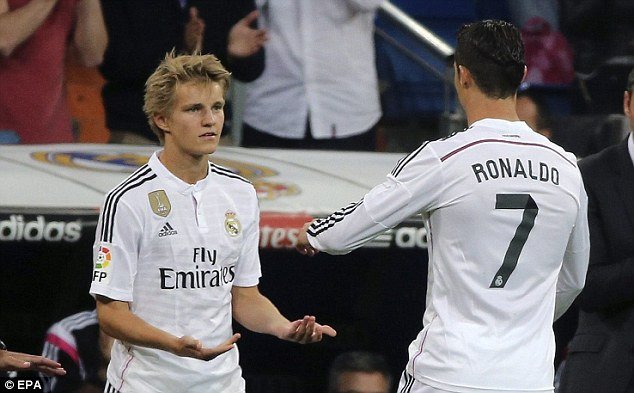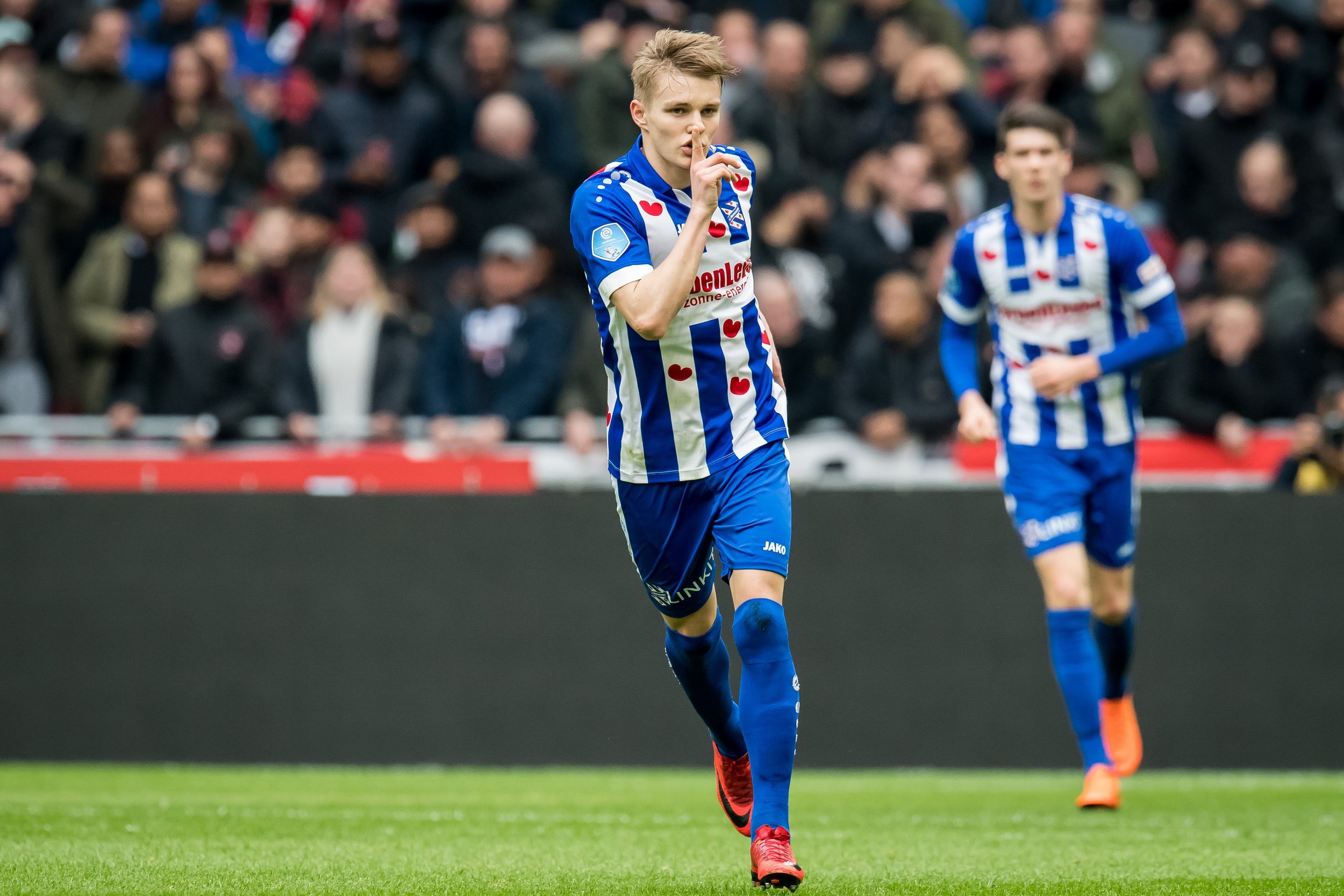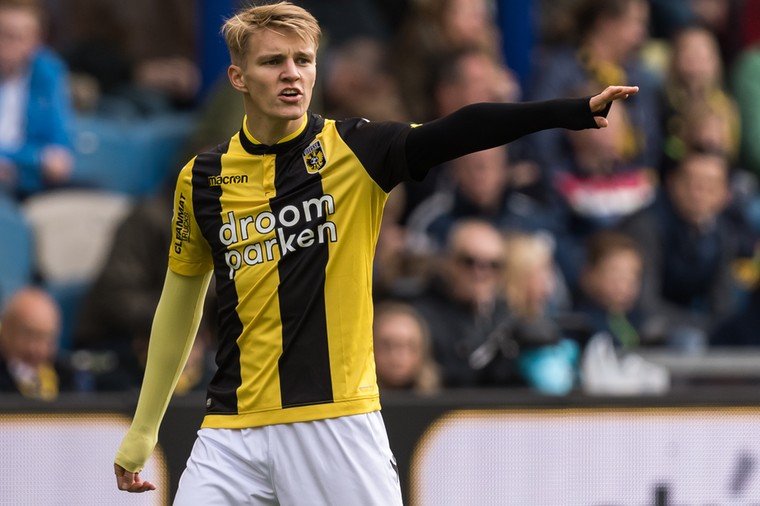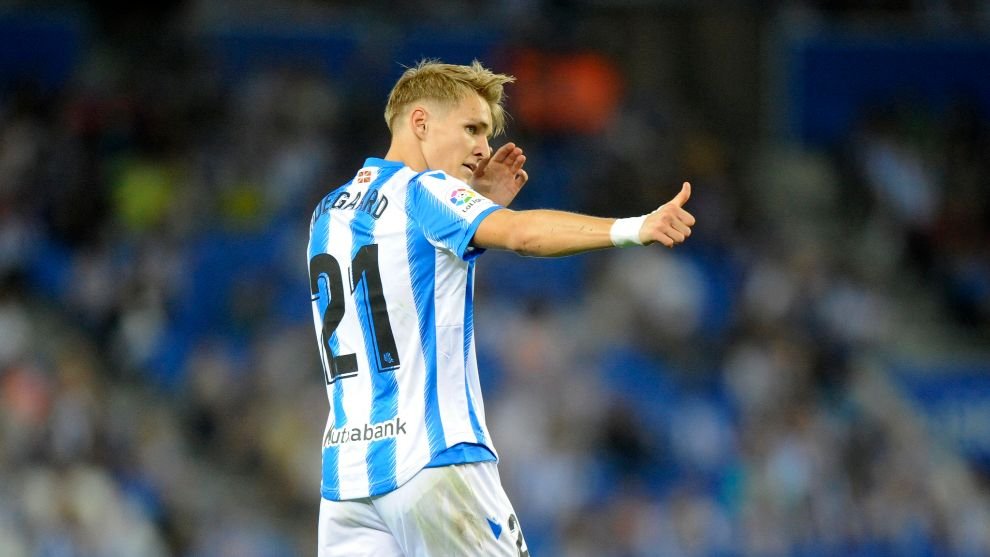Norway’s Finest (Not Haaland btw)
As a lifelong Manchester United fan, I have no business supporting Arsenal in any way. But since he arrived in England in 2020, Martin Odegaard has quietly been a revelation.
I think that’s the best way to describe the 24-year-old in general – a quiet revelation. It’s not as though his contributions go unnoticed, like a Gilberto Silva in Wenger’s Arsenal – Odegaard is an attacking player with fantastic numbers this season. But when you watch him play, there are so many things that Odegaard does outside of just the final pass or shot that make him truly a sensational player. He leads by example rather than through his voice, directing the flow of the game because the ball always seems to go through him.
Odegaard avoiding a tackle from West Ham’s Lucas Paqueta
Odegaard is fantastic at assisting the assist. He’ll make an incisive pass that puts the opposition on the back foot or find space that enables a forward player like Saka or Martinelli to receive either to feet or in stride, allowing them to play the final ball that leads to a goal. The best playmakers in the world are the ones who see the initial pass or dribble that often ends up being more important or difficult to execute than the final assist itself.
Take Luke Modric, for example. The 2018 Ballon D’or winner is perhaps not a number 10 like Odegaard, and that’s reflected in his goals and assists tally, but he excels in the “pre-assist”. Modric makes key passes that cause the opposing defense to scramble and recover, and in doing so, enables Real Madrid’s forward three to pounce and play one or two more quick passes before scoring. World class playmakers aren’t just about scoring or assisting – they all see plays before they come into fruition, quite literally because the very play’s existence hinges on their own movement and vision. They see the setup and create it themselves.
Luka Modric in action
Odegaard has that same ability, which unlocks Arsenal’s forward line and opens the space for them to move into. He has a completely different playmaking profile from Modric, and in a way, he often looks like the classic number 10 that faded into irrelevance in the late 2010s – think players like James Rodriguez and Mesut Ozil. In tight spaces, he has the feet to retain possession before offloading the ball to someone in a better position. When the play requires quick, accurate play, he has the technique and balance to place each pass right on the money. He’ll take on defenders, leaving them for dust using beautiful body fakes and play the through ball just as the opposition scampers to recover. His timing is impeccable, choosing the optimal tempo of play for every situation he finds himself in.
He is perhaps the epitome of “playing at his own tempo” – a description that, again, can only be used to encapsulate the best playmakers in the world. The idea of tempo can be a bit abstract, especially since there’s no real way to quantify it, but the elite creative players have a keen understanding of its importance. Having the ability to speed up the pace of a game and slow it down at the drop of a hat is what has allowed teams like Manchester City and Liverpool to be so successful in recent years.
Below, we have a wonderful example of how Odegaard does it. He has found himself out wide, with Saka, the forward player, slightly further advanced. Odegaard cuts inside, which serves two purposes. One, it makes him immediately more of a threat because his body is now facing the goal. Two, it then draws the opposing defensive midfielder in close to cut down a cross. This action of cutting in isn’t anything special, though, and players do it all the time to create time and wait for options to present themselves.
Odegaard cuts in
Odegaard allows the opposition to slow up, and we can actually see all their heads turning and stopping their runs now that he has effectively “stalled” Arsenal’s progression towards goal. They look at this as an opportunity to get their shape and reorganize, and most times, they are able to do so. Last season, whenever Marcus Rashford or Jadon Sancho received the ball near the touchline, they would cut in and slow the play down to wait for lagging options, allowing the opposition to get reorganized, forcing a back pass or a lateral one.
The opposing defenders slow down and turn
But, in that split moment of tempo slowing, Odegaard ramps up the pace again, playing in a through ball to Saka between the two defenders. Had he tried this pass before slowing the game down, it would have been cut out by the defender on Saka’s right shoulder. But by changing the tempo of the game, Odegaard catches that defender off guard, twisting him inside out, and giving Saka time and space in the box to create a final chance.
Odegaard plays a dagger of a through ball
That’s what we mean by tempo. And Odegaard, like the conductor of an orchestra, changes it as he sees fit to create something supremely beautiful. He sees this play before anyone, even his own teammates oftentimes, and that is what makes him so dangerous. This isn’t something you can quantify – this specific moment doesn’t lead to a goal and Saka might make a mess of the pass in the end, but these are the things that impress me the most when I watch him. In a game so defined by pace nowadays, it’s amazing to see that intelligence and technique still separate the great from the good.
People are quick to forget that Odegaard was placed in the spotlight at 16 years of age, following his debut for Real Madrid. In an early display of maturity beyond his years, when reacting to comparisons to Lionel Messi in 2015, he said, “if you get carried away now, you won’t get far in 10 years. I’m supposed to be at my best then, not now.” In the next years following his Real Madrid debut, he would fade out of the limelight, going off on loans to SC Heerenveen, Vitesse, and Real Sociedad – loans that pundits believed marked a sign of overhyped potential. But now, in 2023, almost 10 years later, Odegaard is very nearly at his best.




So if anyone in that young Arsenal side could lead the club to a title, of course it would be Martin Odegaard. He was made captain of Arsenal ahead of the 2022/23 Premier League season, not two years into joining the club. Being the leader of a football team says a lot about a player’s character – even more so when the player is young. I remember watching a 19-year-old Matthijs de Ligt inspire Erik ten Hag’s charismatic Ajax side to the Champions League semi-finals and wishing Manchester United would pull the trigger and sign him. His ability was clear, but his fierce and roaring character was something we so desperately needed.
Odegaard may very well win the Premier League with Arsenal this season, ending a drought that has lasted for nearly 20 years. And the team deserves it. I thought they played some fantastic football last season under Arteta, even if fans and stats-obsessed pundits might argue otherwise. In my opinion, Odegaard has been the primary catalyst for the change in Arsenal’s performances on the pitch and may very well be on his start to becoming a club legend. If he continues on his current trajectory, there’s no telling what his limit is.
The kid is absolutely brilliant.




